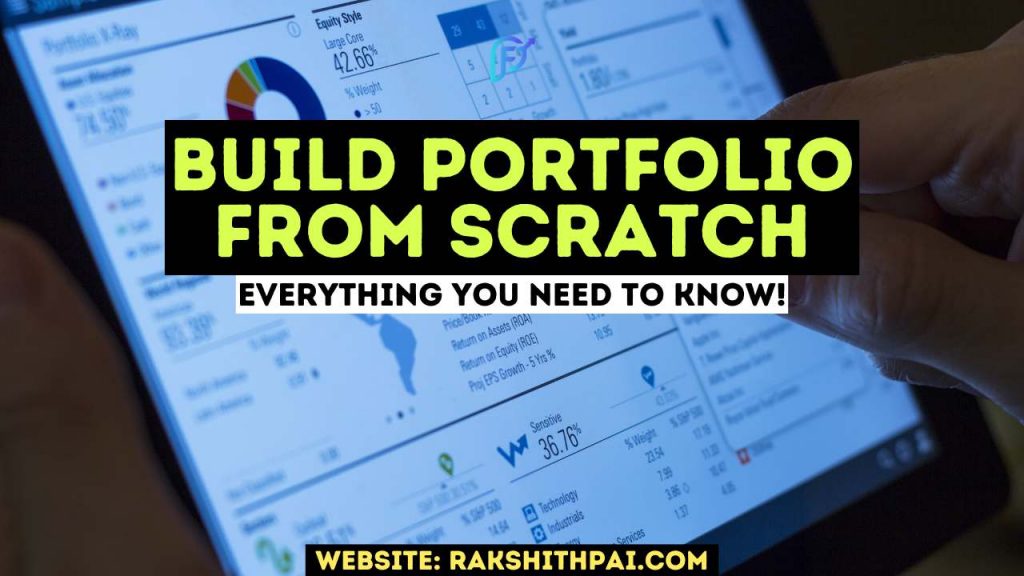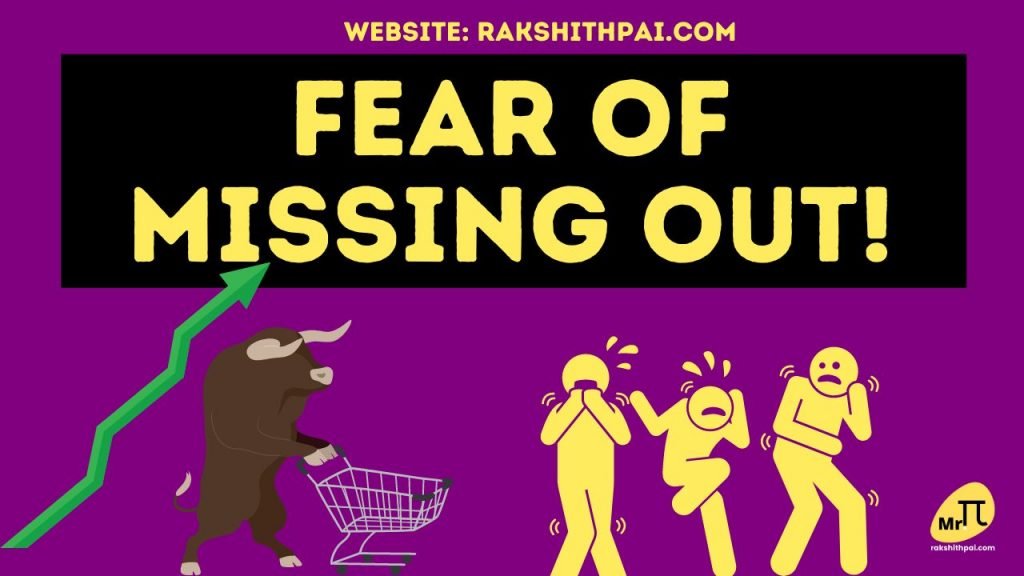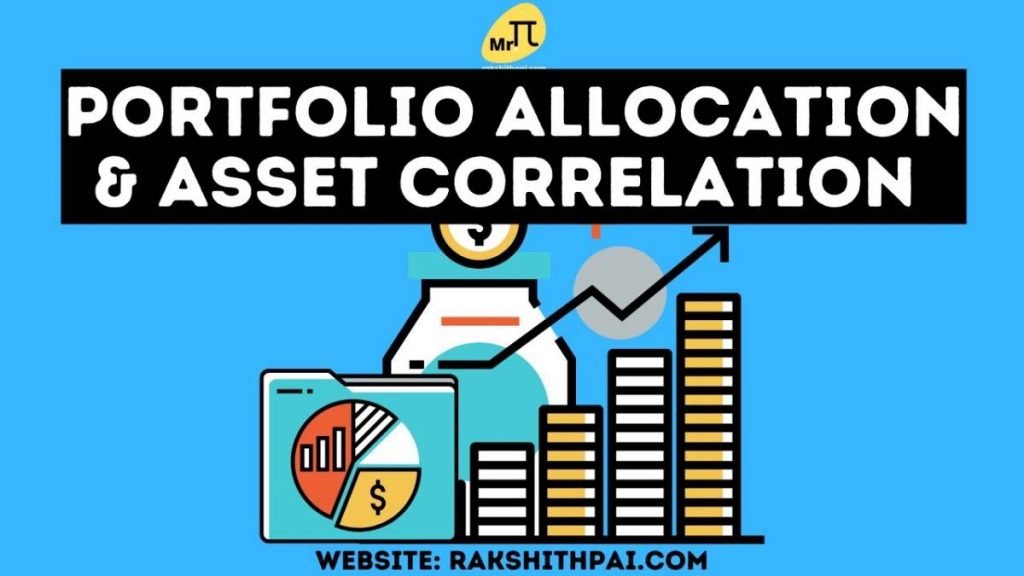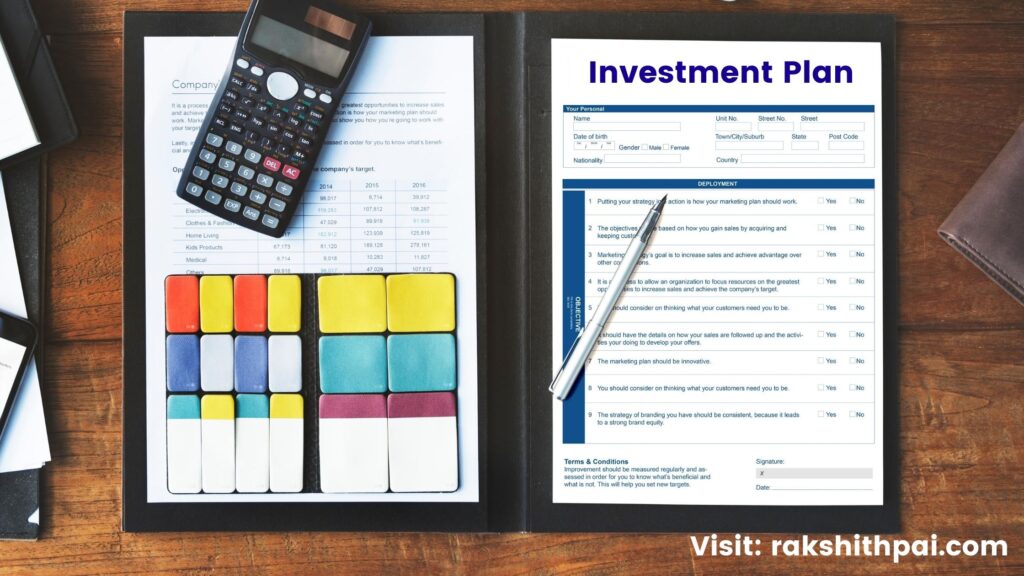Table of Contents
What is an Investment Portfolio?
An investment portfolio is a combination of various assets put together, invested such that each asset with its own correlation, affects one another’s return.
The goal of each investor with a diversified portfolio is to earn money through capital appreciation or dividend payouts. Your share in portfolio investment must be passive, meaning you do not make management choices, unlike an investment in a firm you actively control.
Your portfolio may consist of assets such as equities, bonds, mutual funds, and exchange-traded funds that can all be part of varied weightage. Even though a “portfolio” is more of an idea than a real place in the digital age of investing, it might be helpful to think of all your assets as being in a single holding.
When determining how to invest your money, you should take into account all of your financial assets at once. This includes your expected return, tax rate, level of risk, and probability of loss.
Modern Portfolio Theory & Investment Analysis:
Portfolio with Risk Tolerance in Mind:
When putting together a portfolio, one of the most crucial factors to think about is how much risk you are willing to take. Tolerance for risk is how open you are to losing some of your investment capital in order to potentially gain more in the long run.
Higher-risk investments have the potential to produce higher returns, but they also increase the likelihood of far larger losses. The largest gains may be found in the stock market, while bond investments help keep your portfolio’s value stable.
Also, How well you can emotionally weather market ups and downs is directly related to your risk tolerance, which in turn is determined by how far away you are from a financial objective like retirement.
You can benefit more from the market’s general upward development if your objective is far off in the future and you have the patience to ride out the inevitable ups and downs that will inevitably occur. Before you start creating your investment portfolio, check your risk tolerance to get a sense of how much you can stand to lose.
People who are younger and planning ahead for retirement can mostly invest in stocks because they have time to get back on their feet if they lose a lot of money. As those same investors get closer to retirement and their risk tolerance drops, they might shift their portfolio’s focus toward bonds.
Having a mix of different sorts of investment accounts is also a smart idea. Investing in a tax benefit scheme, which offers valuable tax benefits, is a smart move for any saver. You might want a zero-brokerage ELSS investor account from which you can invest money at any time without being charged a fee. CLICK HERE!
Types of investment portfolios:
A model portfolio is a group of holdings that are held by the investor but are actively managed by financial experts. Model portfolios use a strategy called “diversification” to get the return they want at a level of risk they can handle. A model portfolio is not ideal for everyone. In fact, when selecting how to invest your assets, it is important to take your level of comfort with risk into account.
A person with a high-risk tolerance and a long time horizon would benefit from an aggressive portfolio, whereas someone with a low-risk tolerance and a short time horizon would do better with a cautious one. There are 3 types of investors, as follows;
Conservative Investor
A safe and reliable investment that is primarily preferred by those who are nearing retirement. Here, an investor chooses to invest over 70% in bonds and other fixed income instruments and the balance of 30% in equity and other risky assets.
Moderate Investor
This is a common investment type. Here, an investor invests 50% in equity and the other 50% in debt instruments. Such an allocation is suggested for every class of investor.
Aggressive Investor
Preferred mainly by young investors and other risk takers. Such an investment allocates more than 85% of the portfolio to Equity & other risky assets, while the balance of 15% or less is invested in fixed income instruments.
How to manage your portfolio?
Understanding Portfolio Balancing:
An unbalanced portfolio might develop over time if you don’t rebalance it periodically. The proportions of your portfolio may be thrown off if the value of even a single stock increases. By following a disciplined approach, you can get your investment portfolio back to the way it was before. For more information on portfolio allocation, CLICK HERE!
If you’re working with a Robo-advisor or being handled by a professional investment management firm, you won’t have to worry about this, since your portfolio will be rebalanced automatically as needed. For example, your mutual funds are constantly rebalanced to reduce risk and increase returns.
You may hear from your financial adviser that you need to rebalance your portfolio every six months or a year, or if your allocation to a certain asset class (say, equities) changes by more than a certain proportion. For example, if you are a moderate investor and your portfolio’s stock allocation went from 50% to 65%, reducing your allocations to risk-free investments like treasury bonds, you might want to sell some of your stocks or make other investments until your portfolio’s stock allocation goes back to 50%.
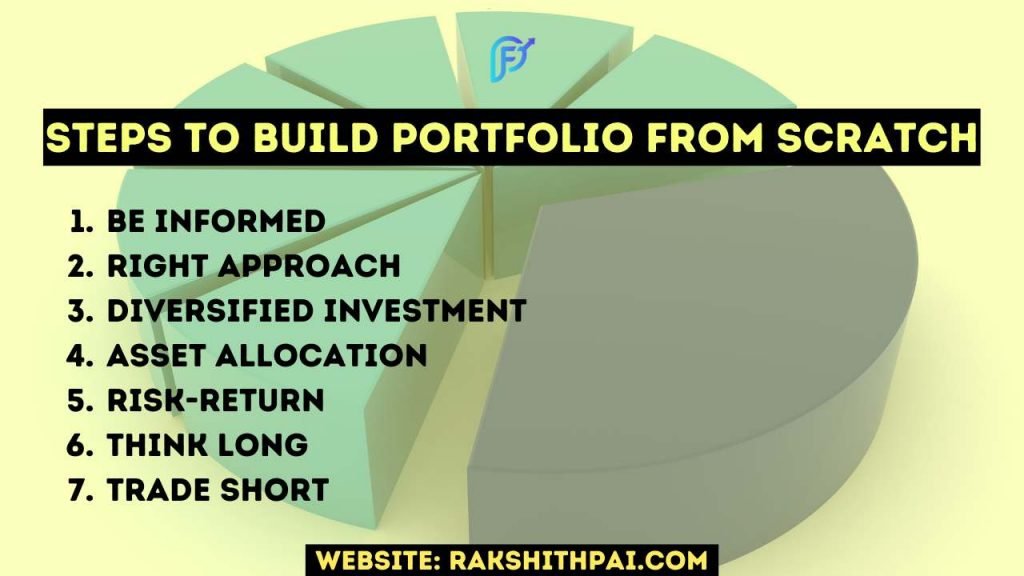
7 Steps to Build a Stock Portfolio from Scratch:
Be Informed
Investing in any business is a serious business. Anything we do, we must do with accurate information. The same applies to Equity Investing too.
“Know what you own and know why you own it”.
Mr. Peter Lynch
Approach
Once you know how much you want to invest in each asset class as a whole, you can choose the exact weighting of the assets that will go into each class.
Currently, many novice investors choose to build their portfolios by selecting stocks and bonds individually or by participating in actively managed mutual funds. This approach, known as “active investing,” has a number of drawbacks.
Many new investors make the mistake of taking a pick-and-choose, short-term approach, which puts them at a disadvantage compared to those who take a more disciplined, long-term approach.
Diversified Investment
One of the most important things you can do to reduce the overall risk of your investments is to diversify your portfolio in such a way that your investments must be in all asset classes but primarily in those which you know the best.
And, if you are a fresher with not much experience, then mutual funds and exchange-traded funds (ETFs), which give instant access to hundreds or even thousands of companies, are a good way for new investor to diversify their portfolio.
How to Diversify Your Stock Portfolio
Asset Allocation
Asset allocation is a method used by certain investors of varying ages to further diversify their holdings. Simply put, this refers to diversifying your investment holdings among different types of assets. Among the possible options here are equities like stocks and mutual funds, fixed-income investments like bonds, and liquid assets like cash or CDs.
For more information on Asset Allocation, Correlation & its Importance, CLICK HERE
Risk-Return
You should know the risks associated with various assets before making your first stock purchase. Your risk tolerance will determine how you weigh the many options available to you. As a general rule, the higher the risk level of an asset, the higher the likelihood that you will suffer a loss if you decide to invest in it.
Government bonds, corporate bonds, CDs, and savings accounts are all examples of low-risk investments. Government bonds are often thought to be the safest option because they are backed by the full faith and credit of a sovereign nation.
High risk, high return: equity investing (mainly small and mid-sized firms), mutual funds, and real estate investment trusts (REITS) are all examples of high-risk investments. You risk losing your initial investment because the prices of the underlying assets are more likely to change.
Think Long
If you believe that Equity Investing is one of the best forms of investing, then you must also know the fact that long-term investing yields higher returns.
Investing in stocks, bonds, real estate, or even just keeping cash on hand for more than a year is considered a long-term investment. In search of greater potential returns, long-term investors are often ready to take on greater levels of risk.
Trade Short
Short-term trading although risky may be one of the best sources to accumulate capital. The capital will be invested in a much more stable company for the long term.
Various short-term trading strategies are used by traders. Some of the best ways to approach trading are either via intraday trading or swing trading.
Conclusion:
Maintaining your portfolio’s diversity is the most important thing you can do as you build it. You need to diversify your holdings inside each asset class as well as across asset classes. Make sure that your investments in a certain class of assets are spread out over a large number of subclasses and market segments.
Putting together a stock portfolio might seem daunting at first, but with these guidelines in mind, you can build a diverse portfolio that serves your unique financial goals.
Before putting your money into stocks, be sure to complete your homework. Knowing what assets are right for you at your age, with your financial objectives, and throughout the course of your investing time horizon is crucial.
Putting together a stock portfolio is only the beginning. You should also study more about creating a diverse investment portfolio with the money you save.
As we said, mutual funds and ETFs provide good diversification for investors. Individuals with modest savings may now access the same economies of scale enjoyed by major fund managers and institutional investors thanks to the availability of such investment vehicles. So, that’s where you must begin your investment journey & slowly build your portfolio.
For More Information, Check this Video:
Disclaimer: All the information on this website is published in good faith and for general information purposes only.

